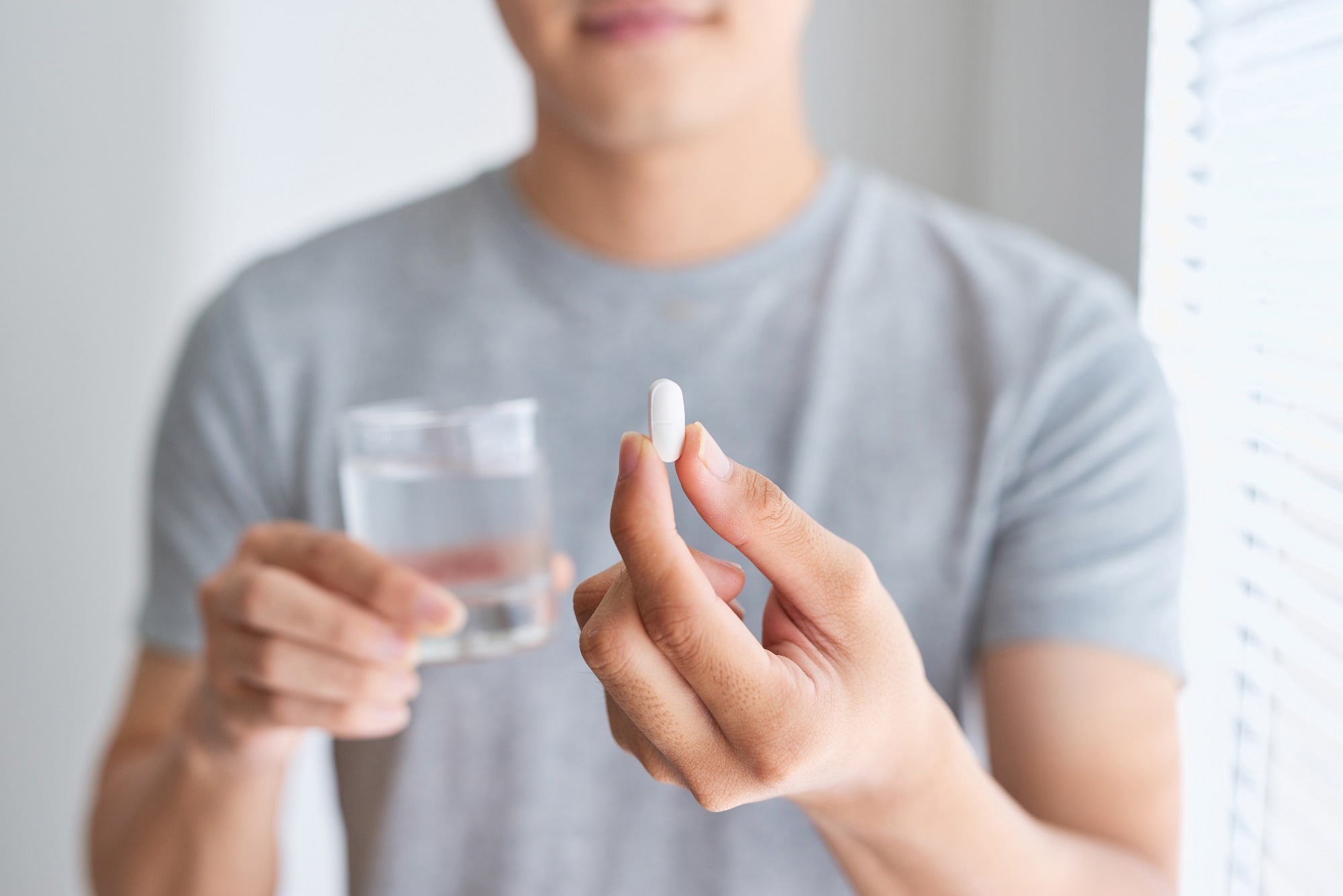Table of Contents
In an effort to balance the burden of birth control, a first-of-its-kind male birth control pill shows no hormone disruption and few side effects in early human testing.
 Study: Safety and pharmacokinetics of the non-hormonal male contraceptive YCT-529. Image credit: Makistock/Shutterstock.com
Study: Safety and pharmacokinetics of the non-hormonal male contraceptive YCT-529. Image credit: Makistock/Shutterstock.com
Half of all pregnancies are accidental. There is much interest in contraceptive options for men and women to prevent this from happening. A recent report in Communications Medicine examined the novel male contraceptive candidate YCT-529.
Introduction
Male contraception currently relies on condom use, but this has a 13% failure rate, or vasectomy, which is mainly considered irreversible. Therefore, there is a need for practical but reversible male contraceptives.
While multiple chemicals, including gossypol, were studied in men during the period between the 1950s and 1980s, for their effect on the sperm count, they cause intolerable reactions with alcohol (the disulfiram reaction), and in some cases, hypokalemia. This led to their abandonment.
Retinol, or vitamin A, is metabolized to all trans-retinoic acid (ATRA) within the cells of the testes. This binds to the retinoic acid receptors in the nucleus. Preclinical studies showed that knocking out retinoic acid receptors-α led to reversible sterility.
YCT-529 is a retinoic acid receptor-α antagonist with non-hormonal contraceptive action. Its mechanism of action disrupts testicular signaling via retinoic acid signaling, thus reducing sperm production.
In both mice and non-human primates (NHPs), administration of YCT-529 for 28 days (mice) and 14 days (NHPs) caused decreased spermatogenesis, which was reversible. This was not accompanied by adverse effects even after 42 and 108 days of total dosing and observation, respectively.
Other preclinical studies of YCT-529 established its efficacy, reversibility, and safety profile in rats and dogs, at doses 22-40 times the safe dose. This led to the current Phase 1a clinical study in humans, using a series of graded doses.
About the study
This trial included 16 male volunteers. All were healthy, between 32 and 59 years, and all had undergone vasectomy. It was a single-dose study, so contraceptive efficacy or effects on sperm counts were not yet evaluated. The study was designed for three periods: two randomized double-blinded placebo-controlled phases and one subsequent third phase. In the first two periods, subjects were dosed on an empty stomach.
In the first period, two subjects, one receiving 10 mg of the drug orally as a single dose and the other a placebo, were in a sentinel group. After 72 hours, the drug (10 mg) was administered to the main group of six subjects, five receiving the drug and one receiving a placebo. In the second period, the same pattern was repeated with 30 mg.
The same period 1 and 2 pattern was repeated with 90 mg and 180 mg of the drug, on the second cohort of volunteers.
In the third phase, eight participants from both cohorts received 30 mg in the fed state, with no placebo controls. The aim was to assess differences in bioavailability in the presence of food. Markers of safety and tolerability were monitored for 15 days after dosage.
For instance, any adverse effects were noted. Clinical monitoring and routine laboratory testing were also carried out to assess blood counts, coagulation tests, urine tests, and serum biochemistry.
Secondary outcomes included changes in the levels of various sex hormones, while exploratory outcomes included inflammatory biomarkers and changes in mood and libido. These were included because retinoic acid could be involved in vascular inflammation.
Study results
The findings showed that up to 180 mg of YCT-529 did not affect the heart rate, the levels of the sex hormones follicle-stimulating hormone, luteinizing hormone, testosterone, or the sex hormone-binding globulin. This supports its non-hormonal mode of action, given that these levels remained stable for up to 108 days in NHPs after dosing for two weeks.
At all doses, YCT-529 was well-tolerated and did not show any significant adverse effects. Half of all participants in the fasted state (including those who received a placebo) had a headache or respiratory infection. Still, these resolved completely and were not considered to be related to the drug, with one exception: one asymptomatic and minor cardiac arrhythmia possibly associated with the drug in the 90 mg group.
No QTc interval prolongation greater than 10 ms was observed at any dose, including the highest (180 mg), a key regulatory safety threshold reinforcing cardiac safety.
Transient increases in IL-6 (a pro-inflammatory cytokine) were observed 24 hours post-dose, especially in the 30 mg fed group, but were linked to high-fat meals rather than the drug itself. Additionally, hsCRP (an inflammation marker) briefly rose in one placebo subject and one treated subject but returned to baseline and was not considered clinically relevant. Baseline TNF-α levels were often above the normal reference range in many participants, but these were consistent across groups and not clinically significant.
Creatine kinase (CK) elevations, including one very large spike in a placebo subject, were observed but linked to strenuous exercise rather than YCT-529.
Food increased drug exposure (Cmax by about 60%, and AUC by 34-36%), and the study noted wide confidence intervals, making the magnitude of this effect uncertain. Food also delayed the time to peak concentration (Tmax) to about 10 hours, versus 4 hours in the fasted state.
The half-life of YCT-529 is 51-76 hours, which could permit dosing only on alternate days or once every three days. However, the study emphasizes that Phase 1b/2a trials are using daily dosing to determine the optimal regimen in the future.
Over the full 10-180 mg dose range, drug exposure increased slightly less than dose proportionality, but from 30-180 mg, exposure (AUC) increased proportionally while peak concentrations (Cmax) rose slightly more than expected.
Self-reported diaries showed that sexual desire scores slightly increased from baseline in both placebo and YCT-529 groups. Still, there were no meaningful differences between groups or changes in mood, enjoyment of sexual activity, or erectile function.
Conclusions
The study showed that YCT-529 was well tolerated in increasing doses, fulfilling some essential requirements for contraceptive development.
“The positive results from this first clinical trial laid the groundwork for a second trial, where men receive YCT-529 for 28 days and 90 days, to study safety and changes in sperm parameters.”
Journal reference:
- Mannowetz, N., McCallum, S. W., Sidhu, S., et al. (2025). Safety and pharmacokinetics of the non-hormonal male contraceptive YCT-529. Communications Medicine. doi: https://doi.org/10.1038/s43856-025-01004-4. https://www.nature.com/articles/s43856-025-01004-4


